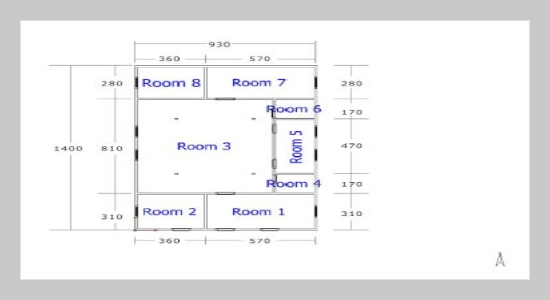Pratomo Soni This email address is being protected from spambots. You need JavaScript enabled to view it.1, Bahar Fetty1, Prasetyo Salsabila1, and Hamidah Rahma2 1Adiwangsa Jambi University, Jl. Sersan Muslim No. 34 Jambi
2Diponegoro University
Received:
December 15, 2020
Copyright The Author(s). This is an open access article distributed under the terms of the Creative Commons Attribution License (CC BY 4.0), which permits unrestricted use, distribution, and reproduction in any medium, provided the original author and source are cited.
Accepted:
February 1, 2021
Publication Date:
August 10, 2021
Download Citation:
||https://doi.org/10.6180/jase.202202_25(1).0023
The stilt house in Seberang Jambi City is a heritage of Jambi Malay culture. There is something unique on the sheath of this stilt house. The window section has various sizes, for example the window size on the living room is larger than the family room. The application of these window aperture depends on the function of space in the house. This research is preliminary research regarding the architectural aspects of the stilt house. The purpose of this research is to find out the performance of natural daylighting on the stilt house by considering the aspect ratio of the window area, like dimensions, the shape, and position of the window. The method of this research is a field survey as a quantitative descriptive analysis. Simulation Method of DIALux 4.2 used for data validation and evaluation of natural daylighting performance. The result of this research is expected to strengthen the study of cultural heritage concept in Seberang Jambi City. Through the study of the application of aperture on the building sheath in the stilt house in Seberang Jambi City has a good natural daylighting performance to fulfill the standard of visual comfort for the activity. This can be seen from the preliminary research data shows on stilt house have a daylighting intensity value 200 - 800 lux in the living room and family room at 12.00 pm.ABSTRACT
Keywords:
daylighting performance, Rumah Panggung (Stilt House), opening
REFERENCES
Pratomo Soni This email address is being protected from spambots. You need JavaScript enabled to view it.1, Bahar Fetty1, Prasetyo Salsabila1, and Hamidah Rahma2 1Adiwangsa Jambi University, Jl. Sersan Muslim No. 34 Jambi
2Diponegoro University
Received:
December 15, 2020
Copyright The Author(s). This is an open access article distributed under the terms of the Creative Commons Attribution License (CC BY 4.0), which permits unrestricted use, distribution, and reproduction in any medium, provided the original author and source are cited.
Accepted:
February 1, 2021
Publication Date:
August 10, 2021
Download Citation:
||https://doi.org/10.6180/jase.202202_25(1).0023
The stilt house in Seberang Jambi City is a heritage of Jambi Malay culture. There is something unique on the sheath of this stilt house. The window section has various sizes, for example the window size on the living room is larger than the family room. The application of these window aperture depends on the function of space in the house. This research is preliminary research regarding the architectural aspects of the stilt house. The purpose of this research is to find out the performance of natural daylighting on the stilt house by considering the aspect ratio of the window area, like dimensions, the shape, and position of the window. The method of this research is a field survey as a quantitative descriptive analysis. Simulation Method of DIALux 4.2 used for data validation and evaluation of natural daylighting performance. The result of this research is expected to strengthen the study of cultural heritage concept in Seberang Jambi City. Through the study of the application of aperture on the building sheath in the stilt house in Seberang Jambi City has a good natural daylighting performance to fulfill the standard of visual comfort for the activity. This can be seen from the preliminary research data shows on stilt house have a daylighting intensity value 200 - 800 lux in the living room and family room at 12.00 pm.ABSTRACT
Keywords:
daylighting performance, Rumah Panggung (Stilt House), opening
REFERENCES









